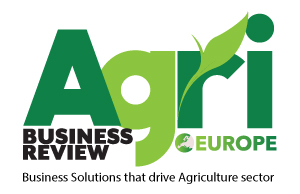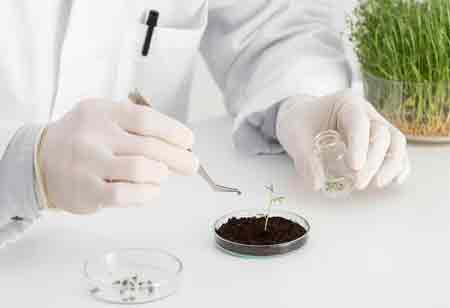Thank you for Subscribing to Agri Business Review Weekly Brief
Plasma-Powered Purity: The Rise of Water Plasma-Treatment in Sustainable Agribusiness
Plasma-activated water (PAW) revamps agriculture by enhancing crop growth, reducing disease, and improving food safety while minimizing reliance on synthetic fertilizers and chemicals.

By
Agri Business Review | Monday, December 01, 2025
Stay ahead of the industry with exclusive feature stories on the top companies, expert insights and the latest news delivered straight to your inbox. Subscribe today.
In the quest for a more sustainable and productive agricultural future, agribusiness is turning to the fourth state of matter for a solution. As the global population burgeons and climate pressures mount, the imperative to produce more food with fewer resources has never been more critical. Traditional methods, heavily reliant on chemical fertilizers and sanitizers, face increasing scrutiny for their environmental impact. Stepping into this gap is a revolutionary technology: plasma-activated water (PAW). This innovative approach harnesses the power of plasma to transform ordinary water into a potent, dual-action liquid that simultaneously nourishes and protects crops. By reimagining water treatment at a fundamental level, plasma technology is setting a new standard for efficiency and sustainability, promising to reshape agribusiness from the soil to the supermarket shelf.
Reinventing Irrigation for Resilient Growth
The application of plasma-activated water begins where all agriculture does: in the field. Traditional irrigation water, whether from surface or groundwater sources, can be a vector for plant pathogens, spreading diseases like root rot, blights, and wilts that can devastate a crop. PAW offers a robust, preventative solution. The RONS within the water act as potent, broad-spectrum antimicrobial agents, effectively neutralizing bacteria, viruses, and fungal spores present in the irrigation supply. This continuous disinfection of the water supply creates a healthier root-zone environment, protecting plants from soil-borne diseases and reducing the need for chemical fungicides.
Beyond its sanitizing properties, PAW serves as a direct bio-stimulant. The dissolved nitrogen species, particularly nitrates, are in a form that is readily available for plant uptake. This means that every irrigation cycle is also a light fertilization event, a process often referred to as "fertigation." This consistent, low-dose nutrient supply stimulates plant growth from the earliest stages. Treating seeds with PAW has been shown to break dormancy and promote faster, more uniform germination. For established plants, it encourages robust root development, increases biomass, and enhances overall plant vigor. The slightly acidic nature of PAW can also improve the solubility of essential micronutrients in the soil, making them more accessible to the plant. The result is a stronger, more resilient crop capable of better withstanding environmental stressors and producing higher yields.
Precision Fertigation and Nutrient Stewardship
The ability of plasma reactors to fix atmospheric nitrogen directly into irrigation water represents a paradigm shift in nutrient management. For decades, agriculture has relied on the industrial Haber-Bosch process to produce synthetic nitrogen fertilizers—a process that is energy-intensive and contributes significantly to greenhouse gas emissions. Plasma activation offers a decentralized, electrified alternative, effectively creating a mini-fertilizer factory on the farm itself.
This technology allows for unprecedented control over nutrient application. By adjusting the parameters of the plasma discharge, farmers can fine-tune the concentration of nitrates and other reactive species in the water. This enables them to create tailored fertigation recipes that match the specific needs of a crop at different stages of its life cycle, from vegetative growth to flowering and fruiting. Because the nitrogen is delivered in a dissolved, plant-available form, uptake efficiency is dramatically increased. This precision minimizes the risk of overfertilization, a leading cause of nutrient runoff that pollutes waterways and contributes to the formation of ecological dead zones. By generating nitrogen precisely when and where it is needed, plasma technology champions a more responsible and efficient model of nutrient stewardship.
Enhancing Post-Harvest Safety and Longevity
The utility of plasma-activated water extends far beyond the field, playing a crucial role in post-harvest operations where food safety and shelf life are paramount. Fresh produce is typically washed after harvesting to remove soil and reduce microbial contamination. Conventionally, this is done using chlorine-based solutions, which can leave behind undesirable chemical residues like chlorates and perchlorates.
PAW presents a superior, chemical-free alternative. As a powerful sanitizer, it effectively eliminates foodborne pathogens such as E. coli, Salmonella, and Listeria from the surface of fruits and vegetables. At the same time, it inactivates the spoilage microorganisms—molds, yeasts, and bacteria—that cause decay. By significantly lowering the microbial load on produce, PAW washing can substantially extend its freshness and shelf life. This reduction in spoilage translates directly into less food waste, a critical goal for global food security. Consumers benefit from safer, cleaner produce that lasts longer, without exposure to synthetic chemical residues. This clean-label advantage is a powerful market differentiator in an era of heightened health and wellness consciousness.
Plasma-based water treatment is rapidly moving from a novel concept to a foundational technology for the next generation of agriculture. Its ability to disinfect, stimulate growth, and fertilize using only air, water, and electricity positions it as a uniquely sustainable tool. By integrating this technology across the value chain—from enhancing irrigation and optimizing nutrient delivery to ensuring post-harvest hygiene—agribusiness can significantly reduce its reliance on synthetic chemicals, conserve resources, and mitigate its environmental footprint. Plasma-powered purity is not just about cleaning water; it is about cultivating a more resilient, productive, and sustainable food system for a growing world.





